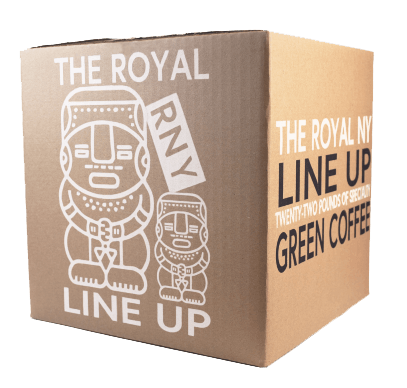No products in the cart.
Coffee
Origin Profile: Kenya
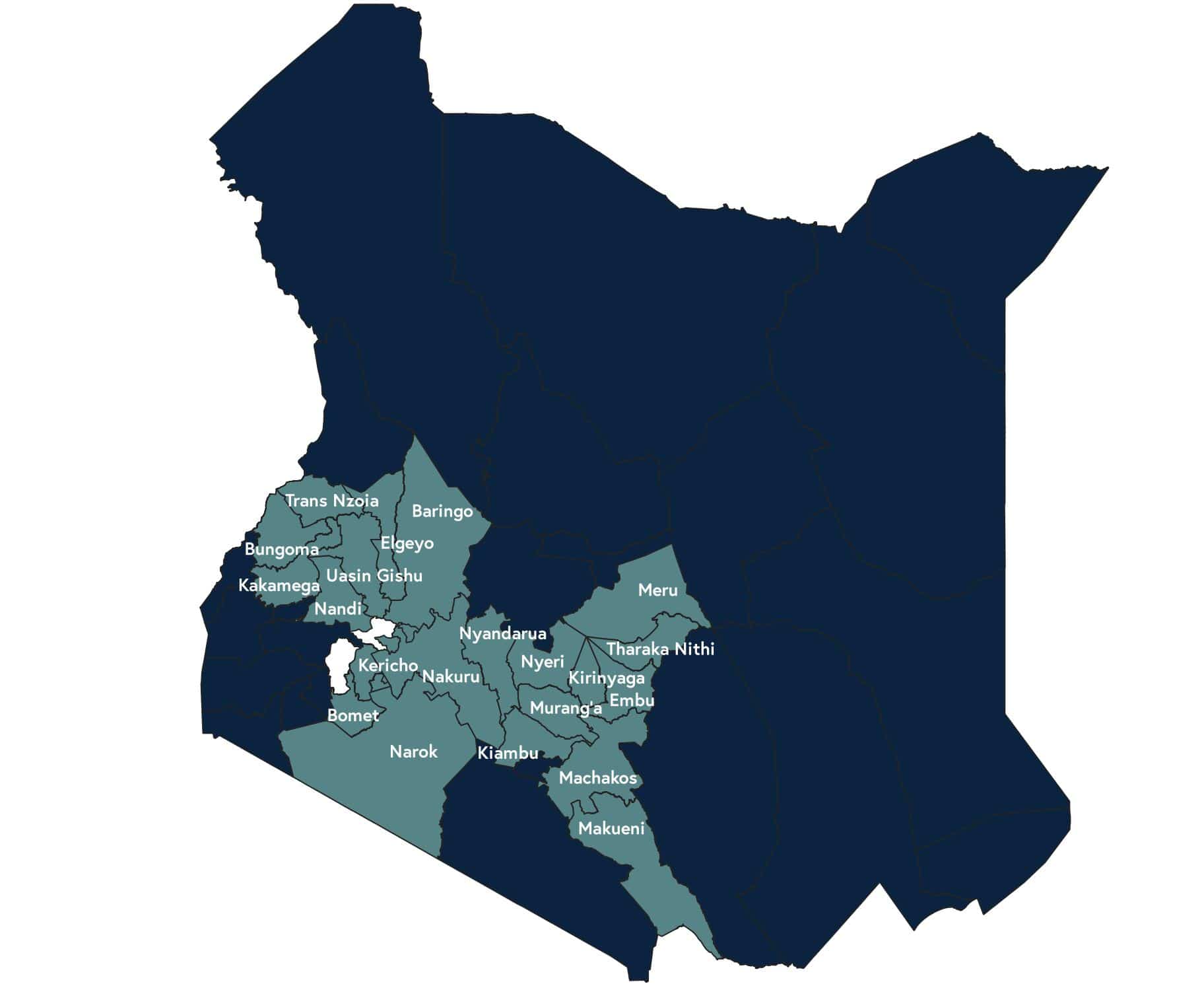
Overview
Production: 41,375 MT or 689,000 60-Kilo Bags
Primary Varieties: SL-28,SL-34, Ruiru-11, Batian, K7
Average Farm Size: 800,000 Small Holders < 1 Hectare
3,000 Estates > 5 Hectares
Maximum Elevation: Mount Kenya – 5,197masl
Notable Growing Regions: Central, Western, Eastern, Rift Valley
Harvest Season: April – June & October – December
Geography
Kenya is located in East Africa with its southeastern edge on the coast of the Indian Ocean. Directly East lies Somalia; North is Ethiopia and South Sudan; West is Uganda and South is Tanzania. The equator nearly bisects the country in perfect halves. Most of the elevation and precipitation occurs towards the south, while the northern half of the country is more arid lowlands. Lake Victoria is located on the Southwestern border of the country. From here, the Mau Escarpment rises vertically in all directions across the country toward Mt. Elgon on the border with Uganda and the country’s highest point near the center of the country, Mt. Kenya. But, slow shifting of the tectonic plates beneath Kenya are causing a valley to form between the edge of the Mau Escarpment and Mt Kenya, this is the Central Rift.
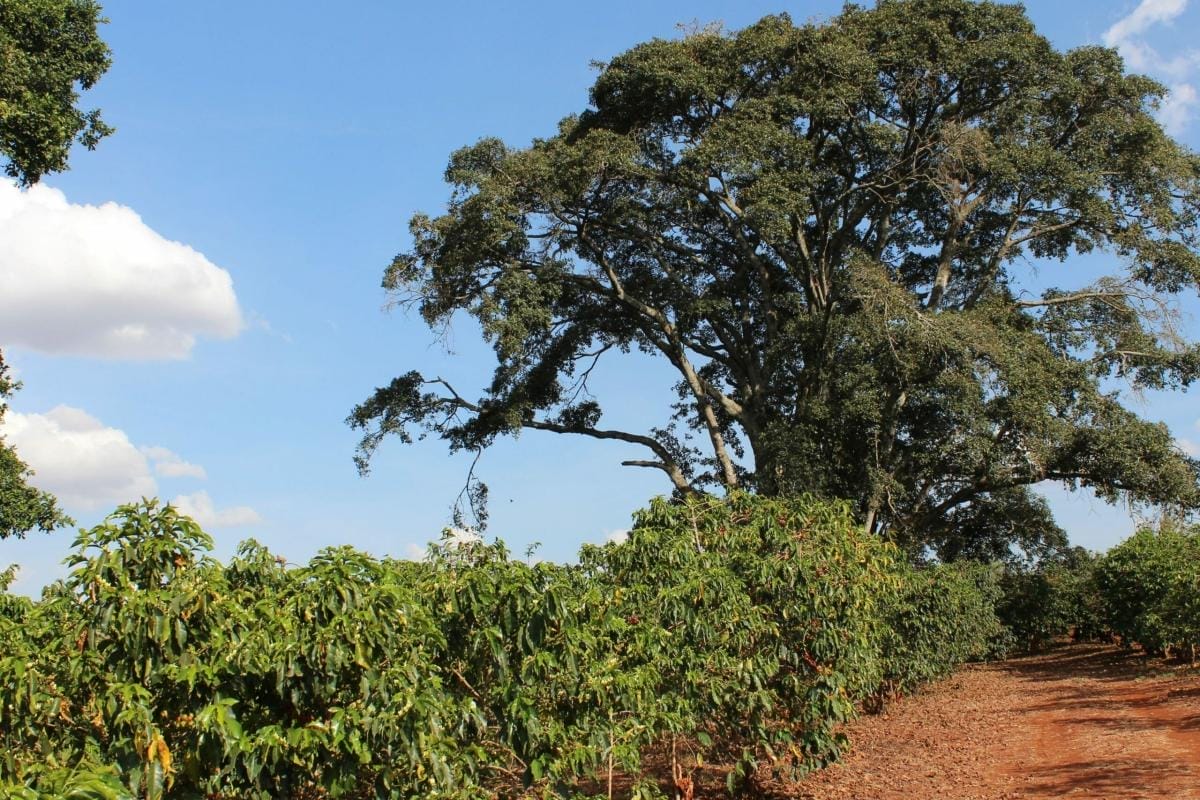
Climate
Elevation is the primary driver of climate since the country lies directly on the equator. Rainfall primarily occurs along the coast and on the mountain slopes where air rises, cools, and condenses. The majority of the rest of the country is arid. Temperature variation is relatively low on the coast, while the inland highlands experience the widest temperature swings. March to May and November-December are the primary rainy seasons.
Growing Regions
Central Region contains Thika, Kirinyaga, Nyeri, Kiambu, and Murang’a and produces approximately 60% of the country’s crop. The slopes of Mount Kenya and the Aberdare Ranges have rich volcanic soil and variable temperatures that produce complex coffee with vibrant acidity.
Eastern region of Embu, Meru and Machakos: These areas are more arid with coffee growing along hills. The lower elevation, low rainfall, and higher temperatures produce coffee with more mild acidity and fuller body.
Western region of Bungoma, Vihika, Kakamega on the slopes of Mt. Elgon have more mature soil, variable daily temperatures, acidic soil, and adequate rainfall. This yields coffee that is high in acidity and complex.
Rift Valley region of Nandi, Nakuru, Baringo has young volcanic soils and generally lower elevations yielding more mild acidity, fuller bodied coffees.
History
Coffee was first planted in Bura in the coastal Taita Hills in 1893. It spread slowly through the turn of the century only in European controlled areas of the country. Native Kenyans were forbidden from planting coffee, but young European aristocrats with more than 1,000 pounds were given 1,000 acres to establish plantations. In the 1930s, various legislation was enacted to stimulate the industry including allowing native Kenyans to plant coffee, but the farms were limited to 100 trees on 1/4 acre of land far from the european estates to limit their competition. Trade was difficult through small, relatively unorganized institutions and the local growers in more forced into remote areas did not have the benefit of solid infrastructure to transport and sell their coffee. The Coffee Board was established in 1933 to oversee licensing, inspection, and promotion. The Kenya Coffee Auction was inaugurated in 1935 and has been the primary method of coffee purchasing to date.
Smallholders were required to join cooperatives in 1944 and the cooperatives operated under the purview of the coffee board. Since the Board was primarily run by the large estate owners, legislation was less favorable to cooperatives making it difficult for them to compete.
Kenya formed an independent government in 1963 after the Mau Mau Uprising, a brutal conflict between the British Authorities and the Mau Mau. The Mau Mau, officially known as the Kenya Land and Freedom Army, was comprised primarily of the Kikuyu, Meru, and Embu people, but included some Kamba and Maasai people as well.
The Coffee Development Authority was enacted in 1964 by the newly liberated nation to provide small farmers and cooperatives access to better information, technology, and financial resources. The new policies also involved the redistribution of some estate lands to native Kenyans. Over the 1965-2005 period, smallholder coffee lands increased from 13,00ha to 128,000ha. During this same period, the area covered by estates also increased, but at a much slower rate from 32,000ha to 42,000ha.
Kenya joined the International Coffee Agreement in 1962. The ICA helped to maintain relatively high prices to strengthen the economies of coffee producing countries by assigning quotas to member countries. Since the dissolution of the ICA quota system in 1989, Kenya’s coffee production has continued to decline as the impacts of global climate change impact yields and the crop becomes decreasingly profitable against coffee from Brazil and Colombia.
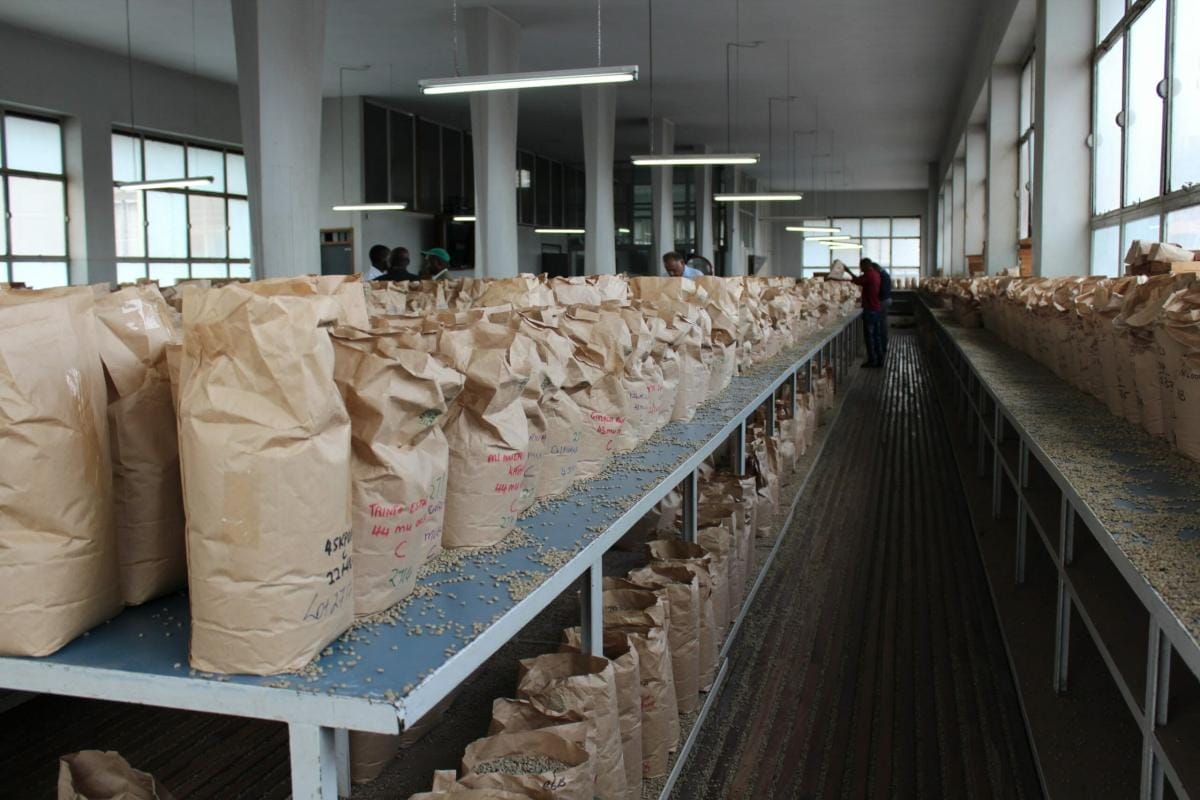
Nairobi Coffee Auction
Small holder farmers (<2ha) are still required to sell cherry to cooperatives who will process it into parchment coffee at factories. Most farmers will produce less than one bag of coffee per year, so processing the coffee themselves is not worthwhile. Cooperatives will deliver the parchment to a relatively small number of mills which will produce green coffee. From there, it will be transported to warehouses where samples will be taken to the Auction for grading before bidding. A majority of the coffee in Kenya is sold this way, but there is a limited number that is sold through the Second Window.
The Second Window allows for direct purchase of coffee by overseas buyers. Most small growers do not have the capacity to market their own coffee outside of the exchange so they rely on a relatively few number of commercial marketing agents. Larger estates are more capable to market their coffee overseas and have had greater success, but since they also have greater marketing power at the exchanges, there is little incentive to pursue the Second Window. Direct sales are continuing to grow and now account for about 15-20% of sales.
The large number of actors in the supply stream drives price of Kenyan coffee higher. Even though the Coffee Directorate requires farmers to be paid 80% of the final sale price of their coffee, that is rarely the case. The average auction price was 4.07USD per kg in 2017/18. The highest payment rate to farmers according to the ICO was found in Nyeri at 105 KES or 0.98USD per kg, less than 20% of the auction’s average sale price that year. The other counties’ payment rates were even lower.
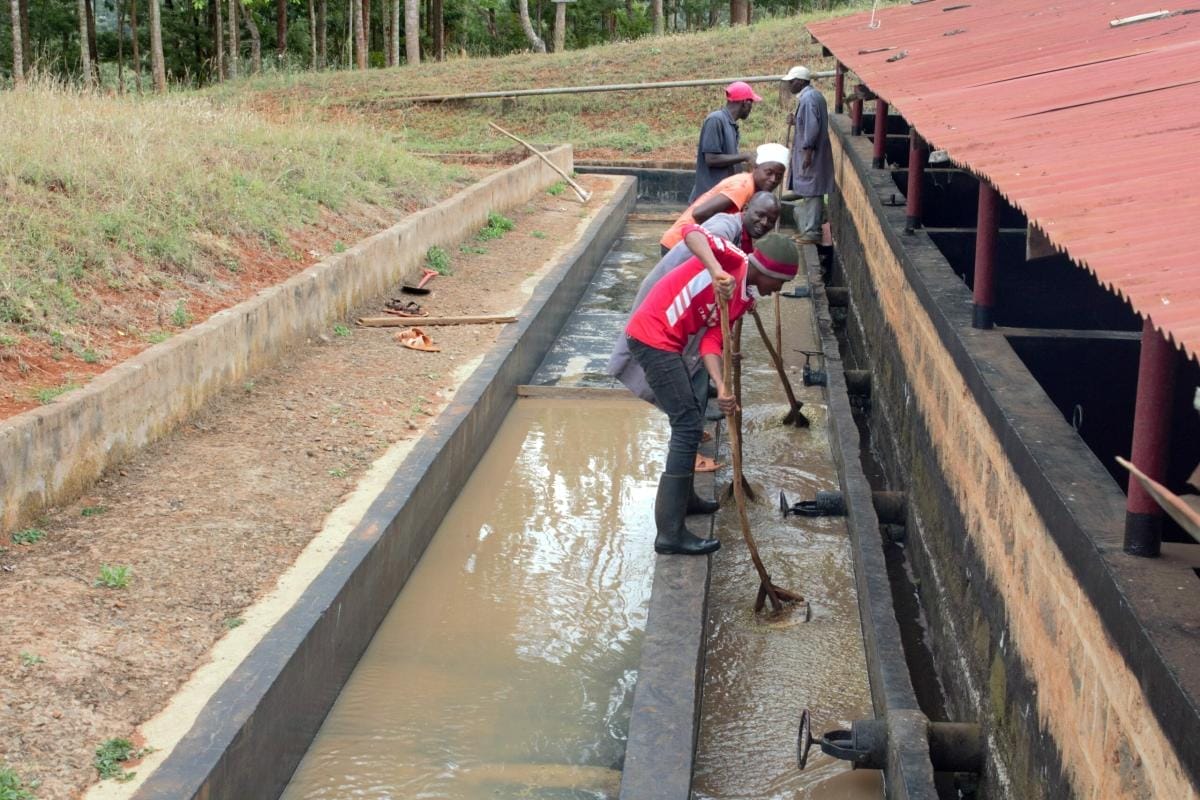
Processing and Sorting
The majority of Kenyan coffee is produced using a variation of the washed processing style. The coffee is picked and the flesh of the cherry is removed using a depulper. The depulped cherry is left to ferment with or without water overnight or for 8-12 hours. The coffee is then washed through channels to remove mucilage and any remaining pulp. The coffee is then soaked and fermented a second time to break down any remaining mucilage before being raked through channels again. As the coffee moves through channels, the current will carry less dense coffee further down the channel and more dense coffee will settle to the bottom first. More dense coffee is generally higher quality and this channel selection allows the mills to separate the highest and lowest quality coffee. The sorted coffee is then laid to dry, primarily on raised beds.
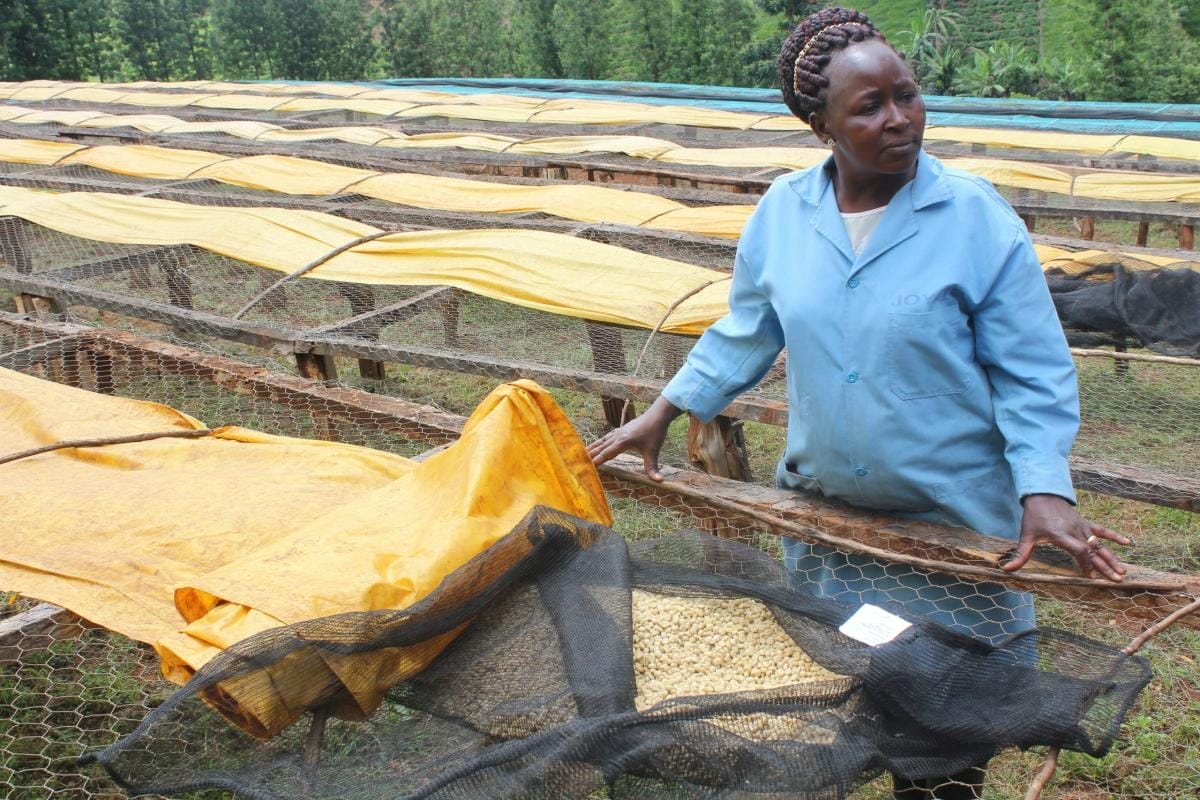
Kenyan coffee is sorted again by size at the dry mill. Size grades are:
Elephant: Retained by screen 21
AA: Retained by screen 17/18
AB: Retained by screen 15/16
PB: Retained by screen 12
C: Retained by screen 10
TT: Light/low density beans gravity sorted
T: Broken, chipped, damaged beans Retained by screen 7
Buyers pay a premium for Elephant and AA beans for their large size. Peaberries (PB) are the result of a growth defect where only one bean grows within a cherry. This creates a small round bean instead of the typical flat-sided, oval shape. Peaberries are valued by some who believe them to be more complex and higher quality and they are willing to pay a premium.
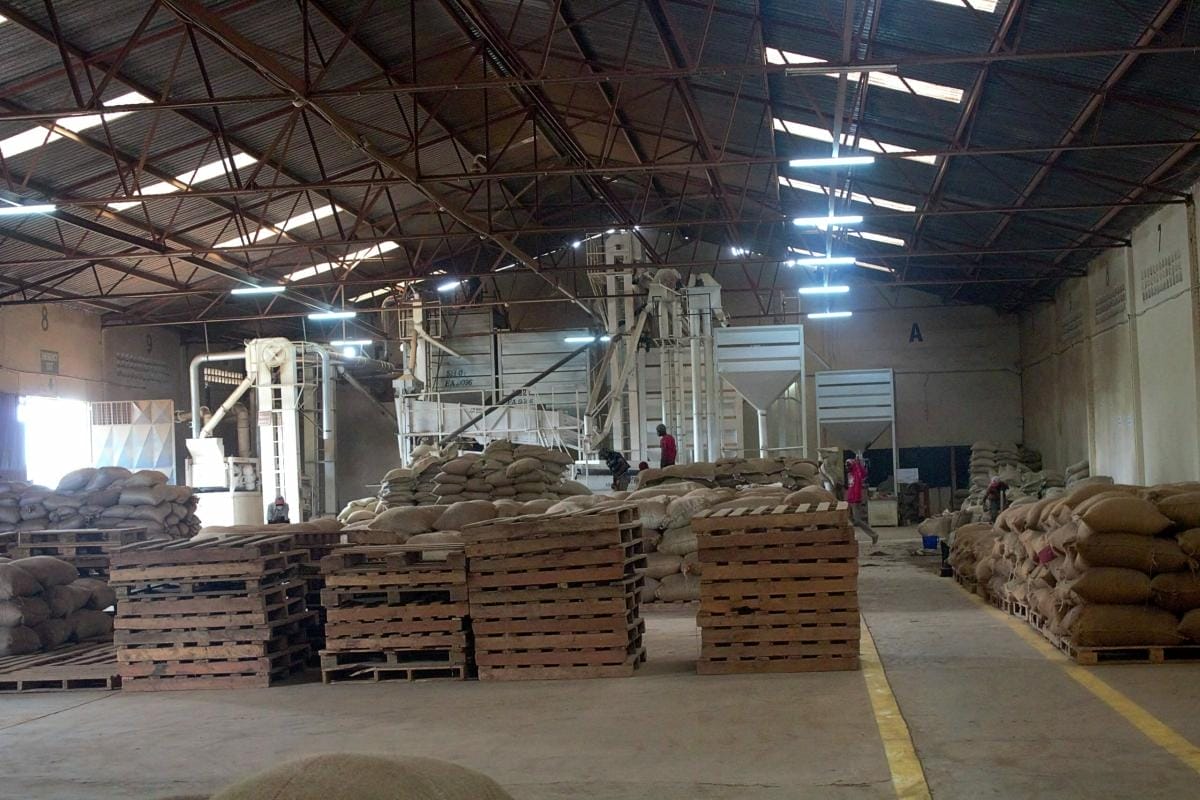
Research Institutions
Scott Agricultural Laboratories was established by the British Colonial government in 1922. The coffee section of the Department of Agriculture was moved to the labs in 1934 and over the next 5 years, 42 trees of various origins were planted and studied at the 24 acre site. Each of these plants was labeled with” SL-#.” The labs conducted a variety of experiments in collaboration with private estate owners in the region to test the resilience, yield, and quality of the coffee. In 1944 the Department of Agriculture relocated the coffee section to an estate better suited for field experiments ending the use of Scott Labs.
The Department of Agriculture for Kenya created the Kenya Agriculture Research Institute (KARI) in 1979 bringing together research institutions to improve food crops, tea and coffee production, rangelands management, and livestock production. In 2013, KARI was replaced by KALRO, the Kenya Agriculture and Livestock Research Organization. Today, KALRO oversees the Coffee Research Institute (CRI) of Kenya.
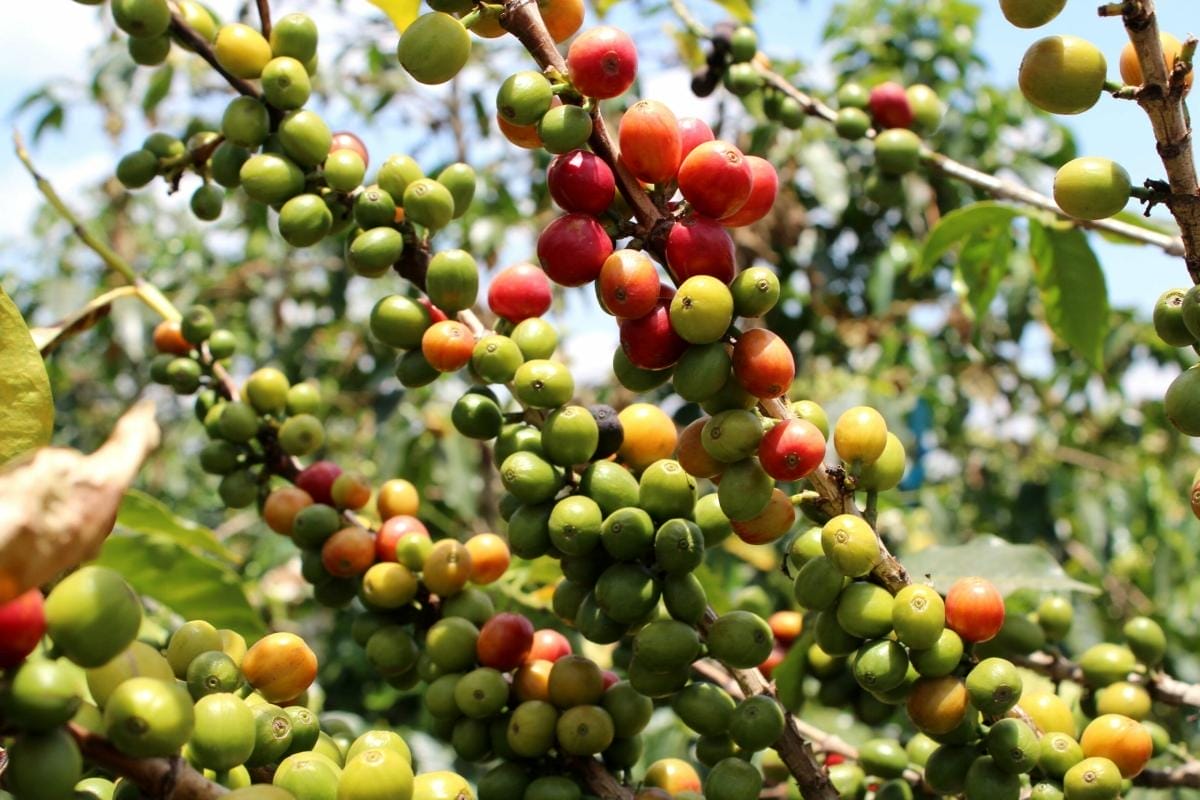
Varieties
SL-28 is the most common variety planted in Kenya. It is best suited for medium-high altitudes with moderate rainfall, and shows drought resistance. SL-28 can be left untended for several years or decades and still maintain its productivity. Some trees in Kenya may be 60-80 years old. It was created from varieties collected from Tanzania in 1931, formerly Tanganyika. SL-28 has spread out of Kenya and is now grown in smaller quantities across Latin America as well. Genetic tests have shown it is a relative of the Bourbon variety group.
SL34 is another Scott Labs cultivar with exceptional cup quality, but highly susceptible to rust and berry disease. This variety is better suited to high elevation areas with good rainfall. It is a relative to the Typica Group.
Ruiru 11 is a compact cultivar with good yield created as a result of the coffee berry disease epidemic that caused the loss of 50% of Kenya’s coffee crops in 1968. The Coffee Research Institute focused its efforts on disease resistant cultivars with high yields and good cup quality. Caturra and Timor hybrids were crossed with more complex hybrids to eventually create Ruiru-11, named for the research station. Ruiru-11 must be pollinated by hand for a seed to be viable which limits its application on a very large scale. Ruiru-11 generally offers less complex acidity than SL-28 or SL-34, causing farmers to choose between resilience and quality.
Batian is the newest cultivar to be created by the Coffee Research Institute. Released in 2010, Batian is a resistant variety to leaf rust and berry disease created by crossing Ruiru 11 with SL-28, SL34 and other varieties. Batian is more promising for specialty coffee because of its increased cup quality compared to Ruiru-11.
Current Climate
Kenya continues to struggle against climate change and urbanization. Climate change is creating shorter, less predictable rainy seasons and drought in some areas of the country. This is causing decreased yields and less certain quality. Many farmers are looking to produce different crops or to raise livestock for a more reliable income. As more people relocate to the cities, land is becoming increasingly more expensive in the primary coffee growing regions surrounding Nairobi. As coffee becomes increasingly more difficult to grow, farmers may opt to sell their land to developers.

Domestic consumption of Kenyan coffee is growing, attributed directly to the growth of the Kenyan middle class. Over the last 10 years, local consumption doubled to 5% of national production. Between 2015 and 2017, the number of cafe’s grew to about 400 from just over 200 and the number of local roasters grew to 25.
Over the last 20 years, Kenya’s output has declined by about 50%, but the average price per kilo has nearly doubled. The specialty coffee industry continues to value the vibrant acidity and unique flavor of Kenyan coffee. The addition of the second window for fully traceable Kenyan coffee represents opportunity that did not previously exist to build strong relationships between consumer nations and Kenyan producers.
